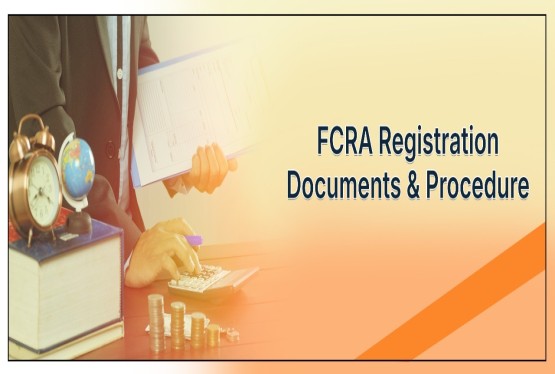When it comes to financial guidance in India, Research Analyst (RA) and Registered Investment Advisers (RIAs) play distinct roles. Both are regulated by the Securities and Exchange Board of India (SEBI) but they serve investors in different ways. Below, we explain who they are, what they do, and how SEBI’s regulations set them apart, in simple friendly terms.
What is a Research Analyst (RA)?
A Research Analyst is a finance professional who studies the markets and companies and shares their findings with the public. According to Regulation 2(1)(u) of the SEBI (Research Analysts) Regulations, 2014, a research analyst is essentially a person who prepares or provides research reports or gives stock recommendations (like whether to buy, sell, or hold a stock) for a broad audience. In other words, an RA creates analysis that is not tailored to any single client’s needs. They might publish reports on particular stocks or sectors, give target prices, or offer opinions on upcoming IPOs. This information is usually the same for everyone who receives it. An easy way to remember: an RA’s job is to research and recommend in general terms, rather than advise one-on-one.
Example: Suppose an RA studies the automobile industry and concludes that shares of a certain car company are undervalued. The RA will write a report explaining why the stock might be a good buy and share this report with all their subscribers or the public. Every reader gets the same recommendation, and it’s up to each investor to decide what to do with that information.
Because RAs influence public investment decisions, SEBI requires them to be registered under the 2014 RA Regulations. It became compulsory from December 01, 2014, that anyone acting as a research analyst must register with SEBI (there was a short grace period for existing analysts to comply). Section 12(1) of the SEBI Act, 1992 also makes it illegal to act as a research analyst (or any SEBI-regulated intermediary) without proper registration. This means if someone wants to sell stock tips or research reports legally in India, they must get SEBI’s approval and license as an RA.
What is an Investment Adviser (RIA)?
An Investment Adviser is a professional who provides personalized financial advice to clients. SEBI’s rules define an investment adviser in Regulation 2(1)(m) of the SEBI (Investment Advisers) Regulations, 2013 as any person who is in the business of giving investment advice to others for a fee. Here, investment advice has a specific meaning: it includes advice on buying, selling, or dealing in securities or investment products, as well as advice on someone’s investment portfolio or financial planning (as defined in Regulation 2(1)(l) of the IA Regulations)?. In simpler terms, an RIA’s job is to advise and guide individual investors based on their unique goals and situation.
Example: If you go to an RIA, you will typically share details about your finances, your future goals (like buying a house, funding children’s education, retirement, etc.), and your comfort with risk. The adviser will then come up with an investment plan tailored just for you – which specific stocks, mutual funds, or other assets you should invest in, how much to allocate to each, and so on. They might tell a young investor to invest more in equities for growth, but advise a retiree to stick to safer investments. This advice is personal and customized for each client.
Like RAs, Investment Advisers must also be registered with SEBI. The IA Regulations, 2013 require that anyone acting as an investment adviser or even calling themselves an “investment adviser” must obtain a certificate of registration from SEBI (Regulation 3(1) of the IA Regulations). Again, SEBI Act Section 12(1) makes it unlawful to give investment advice to clients as a business without this registration. In India, a SEBI-registered investment adviser is often referred to as an “RIA”, which stands for Registered Investment Adviser. Being registered means the adviser has met SEBI’s eligibility criteria and must follow its rules designed to protect investors.
How Do Their Services Differ?
While both RAs and RIAs offer insights on investments, the nature of their service is different. The key distinction lies in personalization versus generalization:
-
Research Analyst (RA): Provides general recommendations through research reports. Their advice is same for all clients or readers of the report. An RA typically does not consider your personal financial situation. They might say “Stock X is a good buy at current prices” and that suggestion is broadcast to everyone, whether you are a college student or a retired pensioner. RAs aim to equip a broad audience with information and analysis; it’s then up to each investor to decide how to use it.
-
Investment Adviser (RIA): Provides personalized advice and financial plans. An RIA’s advice is tailor-made for each client, taking into account factors like your income, existing investments, liabilities, goals, and risk appetite. They will tell you specifically what is suitable for you. For instance, an RIA might advise one client to invest in certain mutual funds and another client to focus on debt instruments, depending on each person’s profile. They perform a “suitability assessment” to ensure the advice makes sense for the client’s individual circumstances.
Simply put, if advice is like clothing, an RA offers “one-size-fits-all” suggestions, whereas an RIA offers “custom-fitted” solutions. SEBI itself clarifies this difference: an investment adviser gives client-specific advice after evaluating the client’s needs and risk tolerance, whereas a research analyst issues a research report or recommendation that everyone receives in the same form. So, personalized vs. non-personalized advice is the core difference between an RIA and an RA.
Regulatory Requirements and SEBI Guidelines
Both RAs and RIAs have to follow SEBI’s regulations, but the exact requirements differ because of the nature of their work. Here are some key regulatory provisions and obligations for each:
-
Registration and Certificates: As mentioned, both must be registered with SEBI under their respective regulations. An RA is registered under the SEBI (Research Analysts) Regulations, 2014, and an RIA under the SEBI (Investment Advisers) Regulations, 2013. They receive a SEBI registration number which they must quote in their correspondence and disclosures. For example, Regulation 13(iii) of the RA Regulations even requires that a registered research analyst must use the term “research analyst” in all their communications, making their role clear.
-
Qualifications and Exams: SEBI insists on certain qualifications to ensure these professionals are competent. Investment Advisers need to have appropriate educational qualifications (such as a professional degree or postgraduate qualification in finance, economics, accounting, etc., or equivalent experience) as specified in Regulation 7(1) of the IA Regulations. They also must pass certification exams – specifically, NISM Series-XA and Series-XB (Level 1 and 2) Investment Adviser certification exams – and maintain those certifications. Similarly, Research Analysts must have prescribed qualifications (at least a graduate degree, for instance, in relevant fields or experience as defined in their regulations) and must obtain the NISM Research Analyst Certification (Series-XV) or an equivalent certification recognized by SEBI?. These exams ensure that an RIA or RA has the necessary knowledge about markets, regulations, ethics, and financial planning or research techniques.
-
Legal Obligation to Avoid Overlap: If a person or firm provides services that fall into both categories, they might need both registrations or at least comply with both sets of rules. For instance, an RIA making public stock recommendations (like in media or on Twitter) must also follow the relevant rules for research analysts when doing so?. Likewise, an RA is strictly supposed to stick to research activities – if they start giving one-on-one specific advice or managing someone’s portfolio, SEBI would view that as acting as an unregistered adviser, which is a violation. In one SEBI enforcement case, an individual running a stock tip website claimed to be a registered Research Analyst, but SEBI found he was actually giving personalized investment calls for a fee (which is the domain of an adviser). SEBI ordered him to refund fees to clients and noted that he was operating as an unregistered investment adviser, violating Section 12(1) of the SEBI Act and Regulation 3(1) of the IA Regulations. The lesson is that one must register under the correct category and stick to the activities allowed under that license.
Conduct, Duties, and Investor Protection
SEBI imposes codes of conduct and duties on both RAs and RIAs to protect investors:
-
Fiduciary Duty (Client’s Interest First): RIAs are considered fiduciaries for their clients. This means an investment adviser must always act in the best interest of their client. The IA Regulations explicitly require advisers to make suitable recommendations after understanding the client’s needs, and to avoid conflicts of interest. For example, Regulation 16 and 17 of the IA Regulations require an adviser to gather all necessary information about a client’s financial situation and risk appetite (risk profiling) and to ensure the advice given is suitable for that particular client. An RIA should not suggest a high-risk product to a conservative investor just to earn a high fee. They also must disclose any conflicts of interest. For instance, if the adviser could get a commission by selling a certain product, they must disclose that, and in fact, SEBI’s rules have moved RIAs toward a fee-only model (an RIA should primarily earn from client fees, not commissions from third parties, to keep advice unbiased).
-
Transparency and Disclosure: Research Analysts must disclose if they have any interest in the stocks they are recommending. For example, an RA should disclose if they or their firm hold the shares of the company they are writing a report on, or if they have any financial interest in the subject company. They also often include disclosures like “This is not personal investment advice” in their reports. RAs are also restricted from certain trading activities – there are rules that an RA or their close relatives should not trade in a security within a short window before and after a report is published, to prevent them from benefiting from their own calls (these are limitations on trading imposed by the RA Regulations to avoid conflict of interest).
-
Research Report Standards: Under RA Regulations, any investment recommendation by an RA must be accompanied by a proper research report or analysis backing it. For instance, if an RA says “Buy XYZ stock”, they should have a detailed research report justifying this recommendation (covering the company’s financials, valuation, etc.). They can’t just give random tips without research. In fact, if an RA makes a recommendation without providing the research rationale, that’s against the rules. This ensures that RAs maintain a certain quality and diligence in their advice.
-
Client Agreement and Record-Keeping: RIAs are required to sign an agreement with each client defining the scope of services and terms (as per a 2020 amendment to IA regulations). They also must maintain records of client details, advice given, and periodic risk assessments. This paperwork might seem formal, but it’s meant to document what advice was given and ensure accountability. RAs, on the other hand, may not have individual client agreements (since they deal in mass communications), but they must maintain records of their research publications and compliance with trading and disclosure norms. SEBI can and does conduct inspections or audits to check whether RAs and RIAs are following the rules.
-
Advertisements and Solicitation: Both RAs and RIAs need to be careful in how they market their services. SEBI doesn’t allow false or exaggerated claims. An RIA cannot promise “guaranteed returns” or use misleading testimonials, and an RA cannot say their stock picks are “sure-shot” or misrepresent facts. SEBI issued guidelines that finfluencers and unregulated advisors cannot give investment advice without registration, and both RAs and RIAs should refrain from engaging in hype. Both are expected to keep a professional tone and provide balanced, factual information when communicating with investors.
Choosing Between an RA and an RIA
For an average investor, it’s important to know whom to approach for what:
-
If you are looking for general market insights, stock analysis, or research reports to inform your own investing decisions, you might look at reports from Research Analysts. For example, if you are comfortable making your own investment decisions but want expert analysis as input, subscribing to an RA’s stock research service could be helpful. Just remember that the RA’s recommendations are broad-based and not customized for you, so you should consider how they fit your personal situation.
-
If you want one-on-one guidance with your investments or financial planning, or if you are not confident making investment choices by yourself, it’s better to consult an Investment Adviser (RIA). An RIA will take the time to understand your financial goals (buying a house, planning for retirement, etc.) and design a strategy suited to you. They can advise on asset allocation (how much to put in stocks vs bonds, etc.), specific investment products, and can even guide you on budgeting or insurance as part of a holistic plan. Essentially, an RIA can act like a financial coach for your money matters.
It’s not that one is “better” than the other – they serve different needs. In fact, some investors use both: they might rely on an RIA for overall planning but also read research reports from various RAs for market knowledge. What’s important is that both RAs and RIAs are regulated by SEBI, which provides some assurance that they have met basic standards and have to follow certain guidelines. Always check if your adviser or research provider is SEBI-registered – you can verify the person’s registration number on SEBI’s website. This helps you avoid unregulated operators or scammers.
FAQs about Research Analysts and Investment Advisers
Q1. Do Research Analysts and Investment Advisers both need to register with SEBI?
Ans. Yes. In India, anyone acting as a Research Analyst or an Investment Adviser must be registered with SEBI under the respective regulations. Operating without registration is a violation of the law. Always make sure the person or firm has a valid SEBI registration number whether they are offering general stock tips (RA) or personalized advice (RIA).
Q2. How can I verify if someone is a SEBI-registered RA or RIA?
Ans. SEBI provides public lists of registered intermediaries on its website. You can search for the individual’s or firm’s name in the SEBI Registered Investment Advisers list or the Research Analysts list published on sebi.gov.in. A genuine adviser/analyst will also typically mention their SEBI registration number on their website, documents, or business card. If someone refuses to disclose their registration, that’s a red flag.
Q3. What qualifications do RAs and RIAs have?
Ans. Both RAs and RIAs are required to have certain minimum qualifications and to pass specific exams. A Research Analyst usually must be at least a graduate (for example in finance, economics, or a similar field) and must pass the NISM Research Analyst Certification Exam?. An Investment Adviser should have a relevant degree or professional qualification (like MBA, CFA, CA, etc., or certain experience) as per SEBI rules, and must clear the NISM Investment Adviser Level 1 and 2 exams?. These certifications ensure they understand financial markets, regulations, ethics, and the scope of their duties.
Q4. Can the same person or company act as both an RA and an RIA?
Ans. In principle, a qualified individual or firm could register under both categories, but they would have to fulfil both sets of regulatory requirements and manage potential conflicts carefully. Typically, firms keep the roles separate – for example, one division might be a registered Investment Adviser and another division might publish research under a separate Research Analyst registration. If someone is giving both broad market tips and personalized advice, technically they should have both licenses or make sure they are compliant with the rules applicable to each. It’s important that they don’t mix the two without proper approvals, as SEBI can take action if, say, an RA starts giving personalized advice without an IA license.
Q5. How do RAs and RIAs earn money – what’s the fee structure?
Ans. Research Analysts often earn by selling subscriptions to their research reports or stock recommendation services. For instance, an RA might charge you an annual subscription fee to receive weekly stock picks or sector analyses. They are not supposed to receive commissions from companies for pushing a stock, as that would be a conflict of interest (any such relationship must be disclosed). Investment Advisers usually charge fees to their clients for advice. The fee could be a flat fee, an hourly rate, or a percentage of assets under advice, depending on SEBI’s guidelines. Notably, RIAs in India are not allowed to earn commissions by selling you financial products (like mutual funds or insurance) – they should be “fee-only” advisors who make money only from the client, ensuring the advice is unbiased. SEBI has set some limits and modes on how RIAs can charge fees (for example, a certain cap on fees as a percentage of the assets under advice, or a fixed amount, etc.). Always discuss and agree on the fee structure with your adviser in advance, and remember that an RIA should provide disclosures of all fees and any potential conflicts.
Q6. If I just follow a Research Analyst’s stock tips, do I still need an Investment Adviser?
Ans. That depends on your comfort and skill in investing. Research Analysts’ tips can be useful for knowledgeable investors who can take that information and fit it into their own strategy. If you have the ability to assess how a particular stock recommendation fits your risk profile or portfolio, you might use RA reports to make your own decisions. However, if you find it confusing to figure out which of those tips are right for you, or how to build a balanced portfolio, you might benefit from consulting an Investment Adviser. An RIA can interpret those tips in context of your overall financial plan or might even tell you that a hot stock tip is not suitable for you. Essentially, RAs provide information, and RIAs provide advice + decision support. Many beginners or busy individuals prefer having an RIA to guide them, whereas experienced investors might rely on their own judgment supplemented by RA research.
Q7. Are finfluencers on social media RAs or RIAs?
Ans. “Finfluencers” – finance influencers on YouTube, Twitter, etc. – have become popular, but many operate without any SEBI registration, which is a cause for concern. If a finfluencer is just educating about finance concepts in general, that’s fine. But the moment they start making specific stock recommendations or giving advice (“Buy this stock now!” or “Invest in these 5 funds for guaranteed returns”), they might be performing the role of an RA or RIA without a license. SEBI has been cracking down on this. If the content is one-size-fits-all stock tips, they should register as a Research Analyst; if they are giving individual advice (for example, reviewing someone’s portfolio or answering personal investment queries for a fee), they should register as an Investment Adviser. Always be cautious with advice from social media personalities – check if they are licensed, and remember that unregistered advisers have no regulatory oversight, which means higher risk of bias or fraud. SEBI is in the process of framing guidelines to regulate such unregistered finfluencers to protect investors.
Q8. In case of a dispute or loss, what recourse do I have against an RA or RIA?
Ans. If your SEBI-registered Investment Adviser mis-sold you something or gave negligent advice, you can raise a complaint. SEBI has an investor grievance mechanism (SCORES – SEBI Complaints Redress System) where you can file a complaint against the adviser. RIAs are expected to maintain records of why a particular advice was given (like they should document that it was suitable as per your profile). If they’ve clearly violated the SEBI regulations or code of conduct – for example, advised something grossly unsuitable, or engaged in misconduct – SEBI can take action ranging from warnings and fines to cancelling, their registration. For Research Analysts, since they give broad recommendations, it can be trickier – you typically cannot hold an RA liable for market losses because they only provided a recommendation, and market risks are always present. However, if an RA was found to be manipulating information or hiding conflicts of interest, SEBI can penalize them. Always remember, no advisor or analyst can guarantee returns – if anyone does, that’s a huge warning sign. Both RAs and RIAs operate under the principle that markets have risks, and their job is to guide, not to provide any surety of profit.
In summary, Research Analysts (RAs) and Investment Advisers (RIAs) are two pillars of investment guidance governed by SEBI in India. RAs empower investors with research and general recommendations, and RIAs hand-hold investors with personalized advice and planning. Understanding the difference helps you choose the right kind of service for your needs and also to be aware of the regulatory protections in place. Always stay informed and don’t hesitate to ask your advisor or analyst about their SEBI registration and qualifications – a true professional will appreciate an informed client!












































































_crop10_thumb.jpg)







_Rules,_2025_learn_crop10_thumb.jpg)
























































































_crop10_thumb.jpg)








 in BIS FMCS_learn_crop10_thumb.jpg)









_crop10_thumb.jpg)





